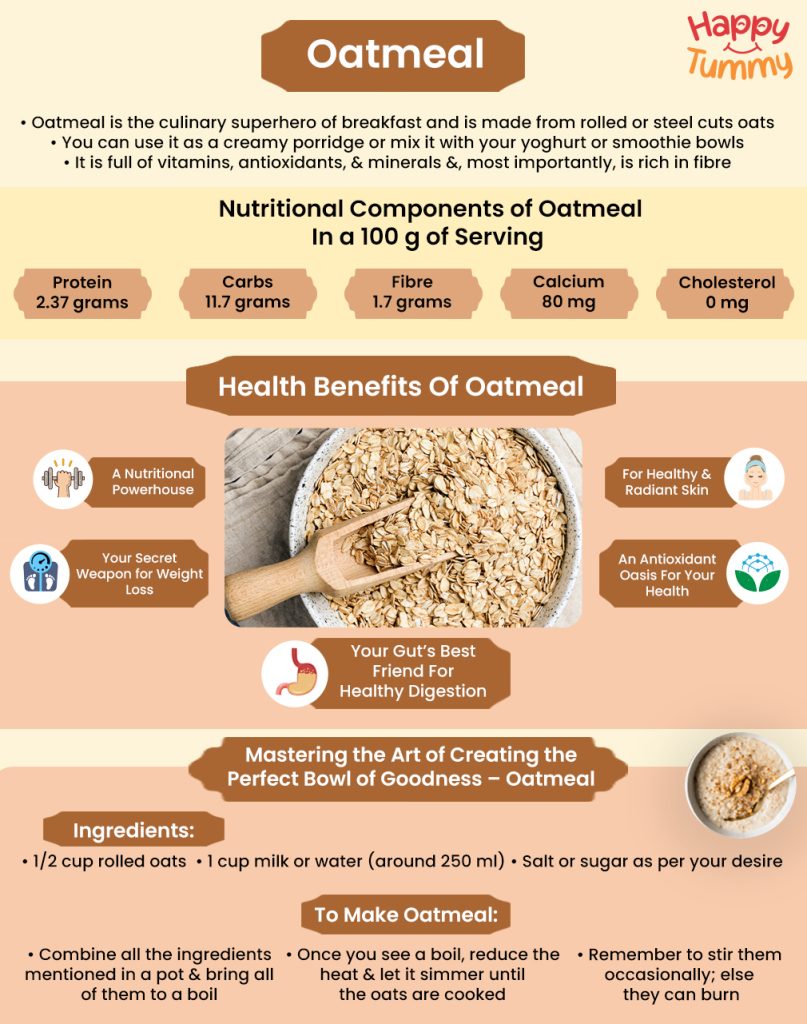In today’s fast-paced world, finding a nutritious breakfast that requires minimal effort can feel like a game-changer. Enter overnight oats—a simple, no-cook meal prep solution that’s taken the health and wellness community by storm. Whether you’re a busy professional rushing out the door, a student cramming for exams, or a parent juggling multiple responsibilities, overnight oats offer a convenient way to start your day with a balanced, satisfying meal. But what exactly are overnight oats? At their core, they’re rolled oats soaked in liquid (like milk or yogurt) overnight in the fridge, allowing them to soften and absorb flavors without any cooking involved. This method not only saves time but also preserves the natural nutrients in the oats.
The appeal of overnight oats lies in their versatility. You can customize them endlessly with fruits, nuts, seeds, spices, and sweeteners to suit your taste preferences or dietary needs. From classic combinations like apple and cinnamon to indulgent treats like chocolate peanut butter, there’s a variation for every palate. Beyond taste, they’re packed with health benefits, including high fiber content that aids digestion, sustained energy from complex carbs, and heart-healthy properties from beta-glucan. According to experts, incorporating oats into your diet can help manage cholesterol levels and support weight loss efforts.
This comprehensive guide will dive deep into everything you need to know about overnight oats. We’ll explore their fascinating history, break down the science-backed nutritional benefits, provide a step-by-step basic recipe, and share exciting variations to keep things fresh. Plus, we’ll offer practical tips, storage advice, and answers to common questions. By the end, you’ll be equipped to make overnight oats a staple in your routine. For more breakfast ideas, check out our internal section on quick healthy breakfasts. And if you’re interested in the broader world of oats, external resources like the Whole Grains Council provide excellent insights.
Overnight oats aren’t just a trend; they’re a timeless, adaptable food that aligns with modern lifestyles. Originating from traditional European preparations, they’ve evolved into a global favorite. In this article, we’ll cite reliable sources to ensure accuracy, drawing from sites like Healthline and WebMD. Let’s embark on this journey to discover why overnight oats deserve a spot in your fridge.
The concept of soaking grains overnight isn’t new—it’s rooted in ancient practices aimed at improving digestibility and nutrient absorption. However, the modern version of overnight oats as we know it has a more recent backstory.
Fast forward to the 20th century, and muesli spread across Europe and eventually to the United States. In the 1960s and 1970s, the health food movement in America embraced whole grains, leading to increased popularity of oats.
Interestingly, the term “overnight oats” itself seems to have gained traction around 2012-2013, coinciding with the boom in healthy recipe blogs. Sites like The Oatmeal Artist and Oh She Glows popularized recipes that emphasized simplicity and customization. By 2015, major publications such as Healthline were featuring articles on tasty variations, noting their nutritional profile. WebMD also highlighted how this method makes oats more digestible by breaking down phytic acid, a natural compound that can inhibit mineral absorption.
Culturally, overnight oats reflect a shift toward mindful eating. In Scandinavian countries, similar dishes like “grøt” or cold porridge have been staples for centuries, often prepared with rye or barley but adaptable to oats. In Asia, congee—a rice porridge—shares the concept of softened grains, though it’s usually cooked. The global fusion of these ideas has led to innovative twists, incorporating ingredients like matcha or tropical fruits.
Today, overnight oats are more than a breakfast; they’re a lifestyle hack. Companies like Overnight Oats and MUSH have commercialized ready-to-eat versions, available in grocery stores. This commercialization underscores their evolution from a humble health remedy to a billion-dollar industry segment. For those interested in exploring traditional muesli recipes, our internal history of grains section offers more depth. Externally, the Smithsonian Magazine has articles on the history of breakfast foods that provide context.
Understanding this history helps appreciate why overnight oats endure. They’re not just convenient; they’re a bridge between past nutritional wisdom and present-day efficiency. As we move to the benefits section, you’ll see how this simple dish packs a powerful health punch.
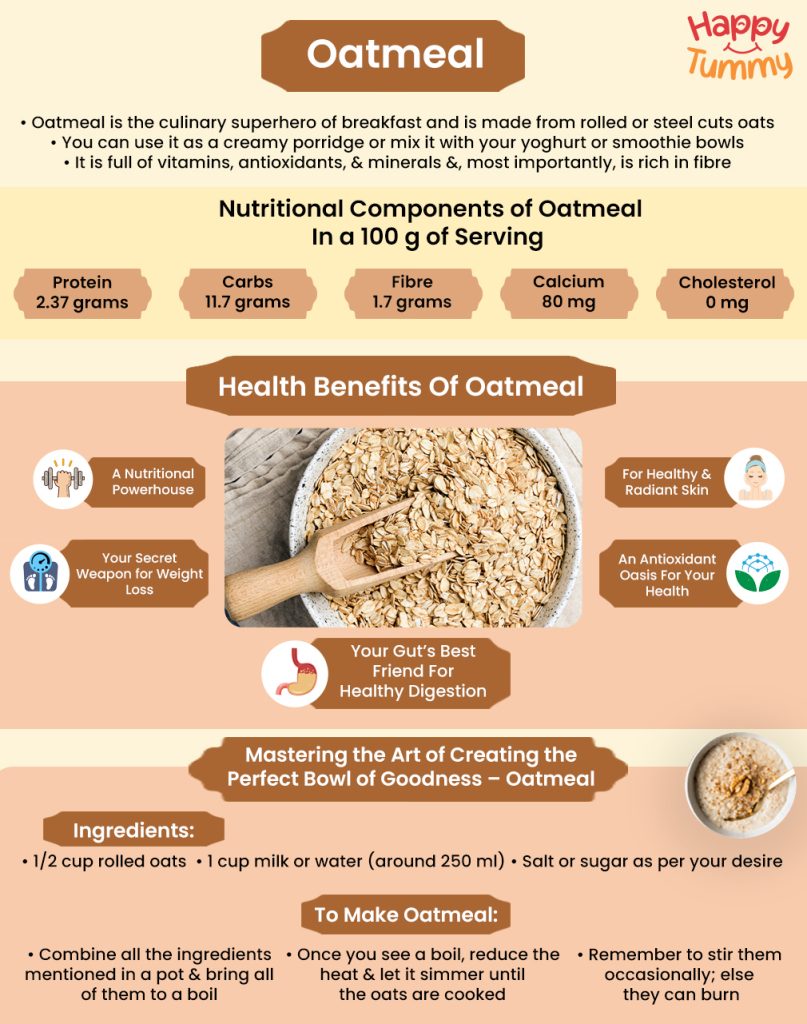
An infographic highlighting the nutritional benefits of oatmeal, which forms the base of overnight oats.
Overnight oats are a nutritional powerhouse, offering a blend of macronutrients and micronutrients that support overall health. At the heart of their benefits is the oat itself, a whole grain rich in soluble fiber called beta-glucan. This fiber forms a gel-like substance in the gut, which helps lower LDL cholesterol levels by binding to it and aiding its excretion. Studies show that consuming just 3 grams of beta-glucan daily—about the amount in one serving of oats—can reduce cholesterol by 5-10%. This makes overnight oats an excellent choice for heart health, potentially reducing the risk of cardiovascular disease.
Beyond heart benefits, the high fiber content (around 4 grams per half-cup serving) promotes digestive regularity and prevents constipation. The soluble fiber also slows digestion, leading to steady blood sugar levels and prolonged satiety, which is ideal for weight management. In fact, people who eat oats regularly tend to have lower body mass indexes, as the fiber helps control appetite and reduce calorie intake. Pairing oats with protein sources like Greek yogurt or nuts in overnight recipes amplifies this effect, providing up to 15-20 grams of protein per serving.
Nutritionally, a basic serving of overnight oats (made with half a cup of rolled oats, milk, and yogurt) delivers approximately 215 calories, 33 grams of carbs, 9 grams of protein, and 5 grams of fat. It’s also a good source of essential vitamins and minerals, including manganese (for bone health), phosphorus (for energy metabolism), and magnesium (for muscle function). When you add fruits like berries or bananas, you boost vitamin C and potassium intake, enhancing immune support and electrolyte balance.
For those with specific dietary concerns, overnight oats are naturally gluten-free if using certified oats, making them suitable for celiac patients. They’re also vegan-adaptable with plant-based milks like almond or oat milk. Research from Mayo Clinic emphasizes starting your day with oats for sustained energy, noting their low glycemic index prevents energy crashes.
Antioxidants in oats, such as avenanthramides, combat inflammation and protect against oxidative stress, potentially lowering the risk of chronic diseases like diabetes and cancer. Combining oats with chia seeds or flaxseeds in recipes adds omega-3 fatty acids, further supporting brain health.
In terms of weight loss, overnight oats shine by being low in added sugars when prepared mindfully. They can replace higher-calorie breakfasts like sugary cereals, leading to better portion control. A study referenced by WebMD links oat consumption to improved gut health via prebiotic effects, fostering beneficial bacteria.
For athletes or active individuals, the complex carbs provide glycogen stores for workouts, while the protein aids muscle repair. Pregnant women benefit from the folate and iron content, especially when fortified with nuts.
Overall, the nutritional profile of overnight oats makes them a smart, evidence-based choice. For more on grain nutrition, visit our internal nutrition hub. Externally, the https://tastetrove.net.offers detailed guides on whole grains.
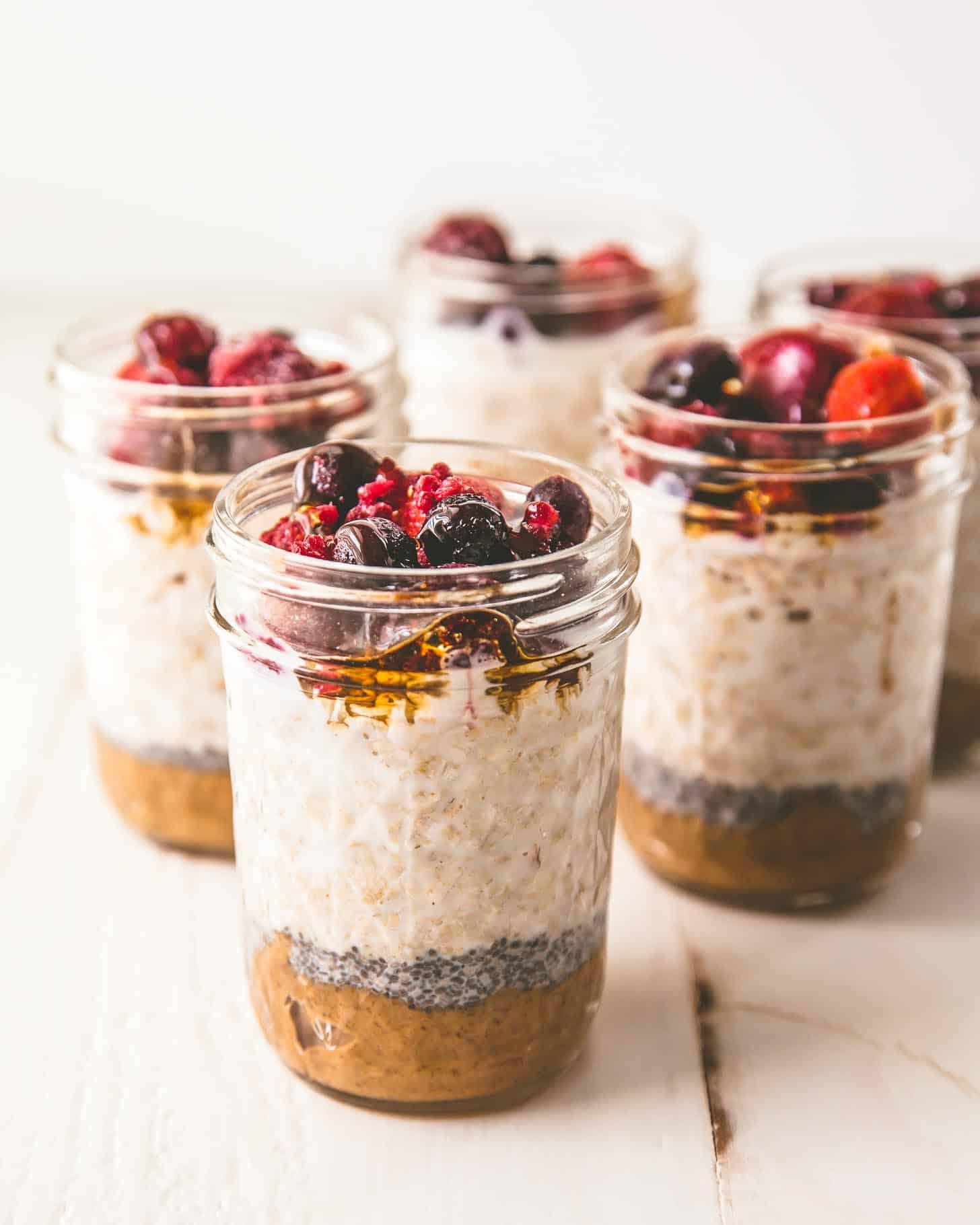
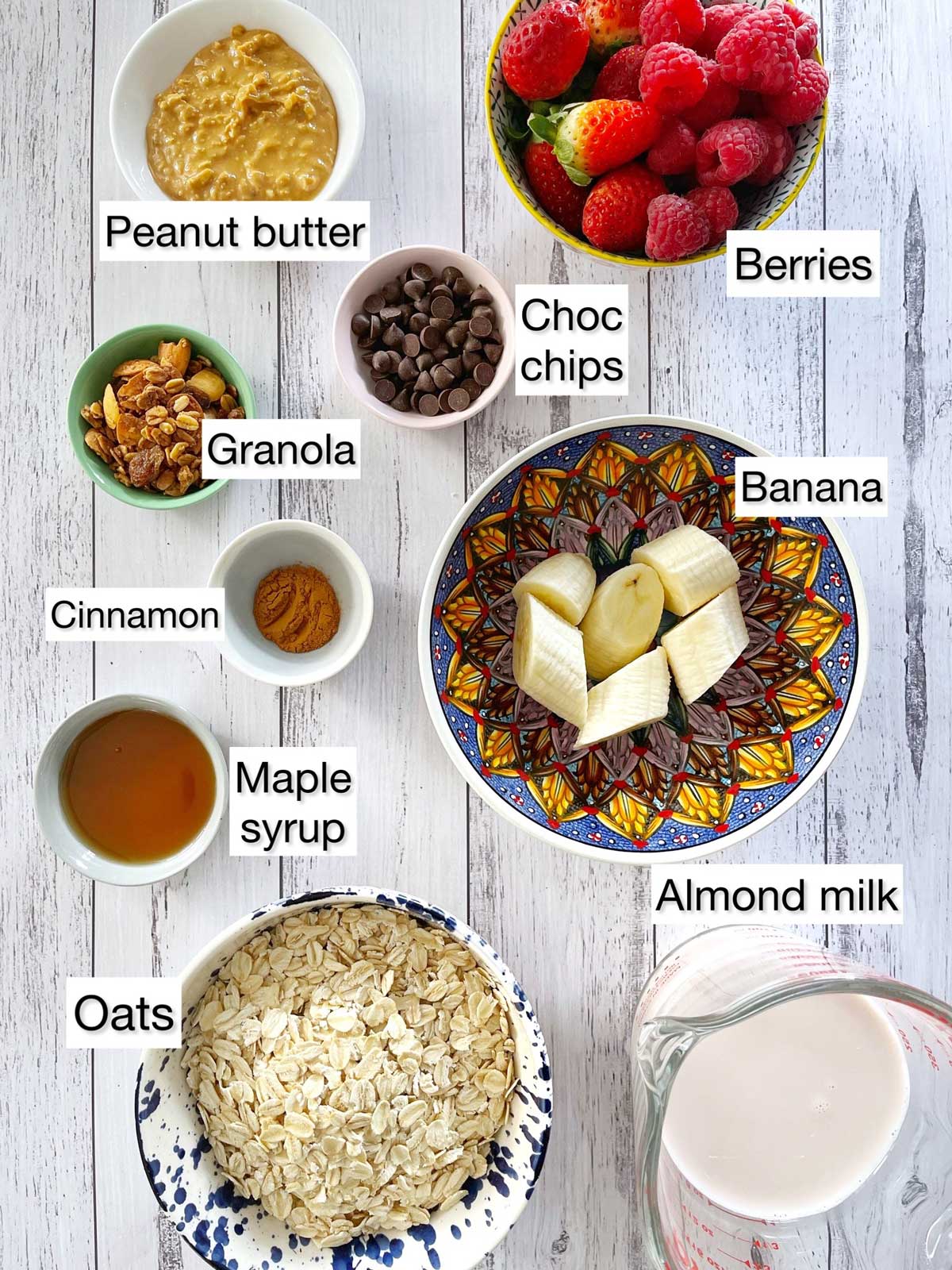
Making basic overnight oats is straightforward, requiring just a few pantry staples and minimal prep time. The beauty lies in its no-cook nature—simply mix, refrigerate, and enjoy the next morning. Start with high-quality rolled oats; old-fashioned or quick oats work best, as steel-cut oats remain too chewy without cooking. Avoid instant oats, which can turn mushy.
For one serving, you’ll need:
- ½ cup rolled oats
- ½ cup milk (dairy, almond, soy, or oat)
- ¼ cup Greek yogurt (for creaminess and protein; use plant-based for vegan)
- 1 teaspoon chia seeds (optional, for thickness and omega-3s)
- 1 teaspoon maple syrup or honey (for sweetness)
- A pinch of salt (to enhance flavors)
In a mason jar or container, combine the oats, milk, yogurt, chia seeds, sweetener, and salt. Stir well to ensure everything is evenly distributed. Seal the lid and refrigerate for at least 4 hours, ideally overnight. By morning, the oats will have absorbed the liquid, resulting in a creamy, pudding-like texture.
Customization starts here. For a vanilla base, add ½ teaspoon vanilla extract. If you prefer thicker oats, increase the chia seeds to 1 tablespoon. The ratio of oats to liquid is key—1:1 for a thicker consistency, or 1:1.5 for creamier results. Experiment with milks; coconut milk adds tropical richness, while skim milk keeps it light.
Nutritionally, this base recipe aligns with the benefits discussed earlier, providing a balanced start to your day. As noted by Canada’s Food Guide, classic versions with strawberries and cinnamon are simple yet effective.
Common mistakes include not stirring thoroughly, leading to clumpy oats, or using too little liquid, resulting in dry texture. Always taste-test your mixture before refrigerating and adjust sweetness.
For meal prep, make batches for the week—up to 5 days in advance. Layer ingredients for visual appeal: base at bottom, toppings added fresh. This recipe scales easily for families.
If you’re new to oats, our internal beginner recipes page has similar guides. Externally, Downshiftology offers step-by-step visuals.
Mastering the basic recipe opens doors to endless creativity, as we’ll explore in variations.
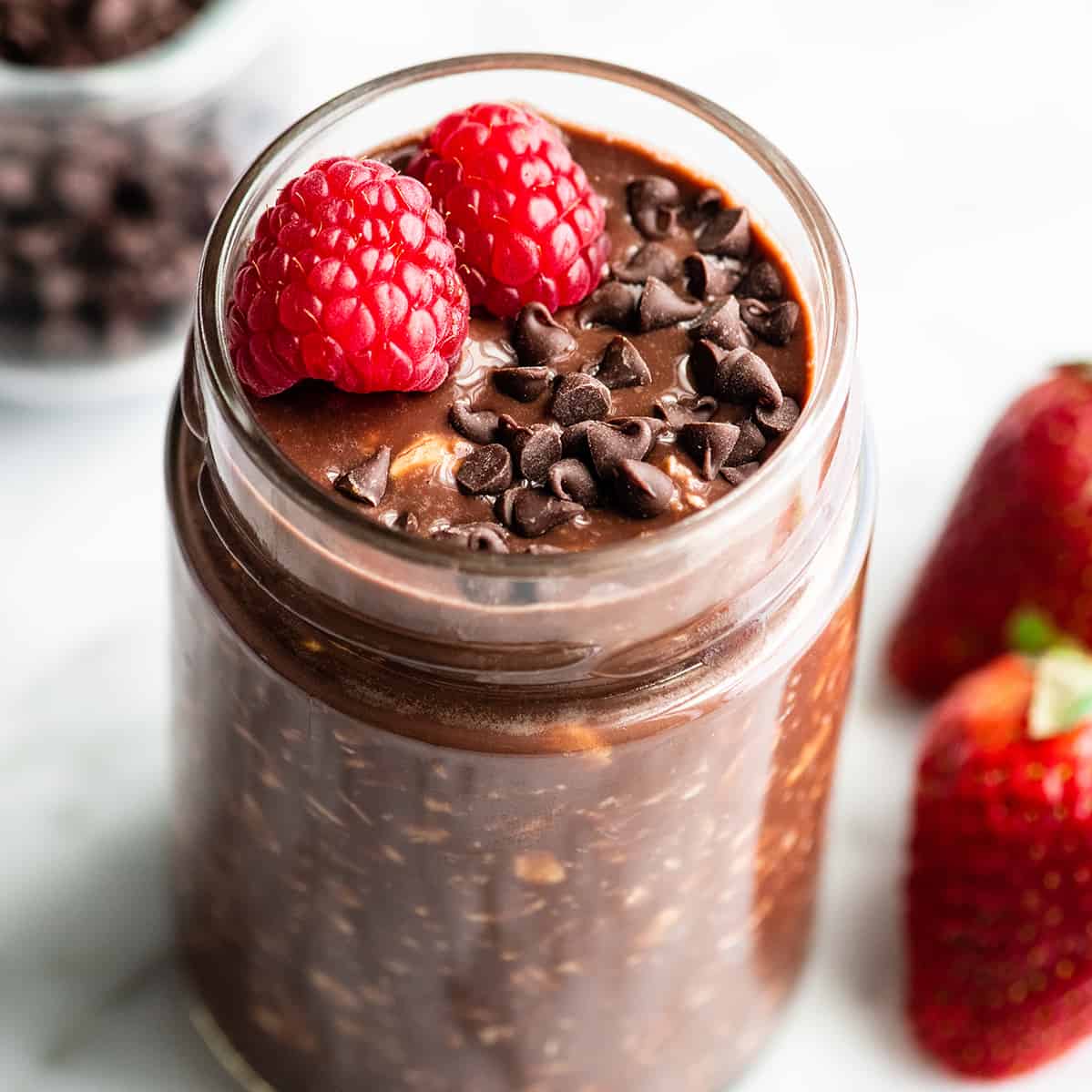

The true magic of overnight oats is in their adaptability. Here, we’ll detail eight variations, drawing from popular sources, to inspire your kitchen experiments. Each builds on the basic recipe, adding unique flavors and nutrients.
- Berry Blast Overnight Oats: Mix in ½ cup mixed berries (fresh or frozen), 1 tablespoon lemon zest, and a dash of vanilla. Berries add antioxidants and vitamin C, making this a immunity-boosting option. Calories: around 250. Top with sliced almonds for crunch. As per Healthline, berry variations support gut health.
- Chocolate Peanut Butter Delight: Stir in 1 tablespoon cocoa powder, 1 tablespoon peanut butter, and a handful of chocolate chips. Use almond milk for nuttiness. This indulgent yet healthy treat mimics dessert, with protein from peanut butter aiding muscle repair. Fit Foodie Finds recommends this for chocolate lovers.
- Apple Cinnamon Classic: Grate half an apple into the base, add ½ teaspoon cinnamon, and a sprinkle of nutmeg. Sweeten with maple syrup. This evokes apple pie, with cinnamon’s anti-inflammatory properties. Ancient Nutrition suggests adding collagen for extra protein.
- Tropical Paradise: Incorporate ¼ cup diced pineapple, mango, and coconut flakes. Use coconut milk and top with kiwi. This vitamin-rich version transports you to the beach, supporting hydration and skin health.
- Pumpkin Spice Fall Favorite: Blend in 2 tablespoons pumpkin puree, ½ teaspoon pumpkin pie spice, and pecans. Ideal for autumn, pumpkin adds beta-carotene for eye health.
- Matcha Green Tea Energy Boost: Whisk in 1 teaspoon matcha powder and a touch of honey. This provides caffeine for a gentle wake-up, plus antioxidants.
- Carrot Cake Inspired: Shred ¼ carrot, add raisins, walnuts, and cream cheese yogurt. This vegetable-infused option sneaks in veggies.
- Savory Spinach and Cheese: For a twist, use vegetable broth instead of milk, add spinach, feta, and herbs. Though unconventional, it’s great for brunch.
Each variation can be adjusted for dietary needs—gluten-free, dairy-free, or low-carb with cauliflower rice substitutes. Experiment with superfoods like goji berries or turmeric for added benefits. For more recipes, our internal oats variations page has exclusives. Externally, One Degree Organics answers common questions on customizations.
These ideas ensure you never get bored, turning breakfast into an adventure.
To maximize your overnight oats experience, follow these tips. Use glass jars for easy storage and portability—mason jars are ideal as they seal tightly and allow layering. Always date your preps to track freshness.
For texture, soak for 4-12 hours; longer softens more. If too thick, add milk before eating. Enhance nutrition with add-ins like flaxseeds for fiber or protein powder for gains.
Avoid common pitfalls: Don’t use hot liquid, as it cooks the oats prematurely. Stir well to prevent settling.
For flavor, infuse with spices overnight. Meal prep in batches, varying flavors for the week.
Storage-wise, keep in the fridge up to 5 days. Freeze for longer, thawing overnight.
Safety first: Use fresh ingredients and refrigerate promptly to avoid bacterial growth.
For troubleshooting, if oats are bland, amp up seasonings. Our internal tips section has more hacks. Club House offers spice ideas.
